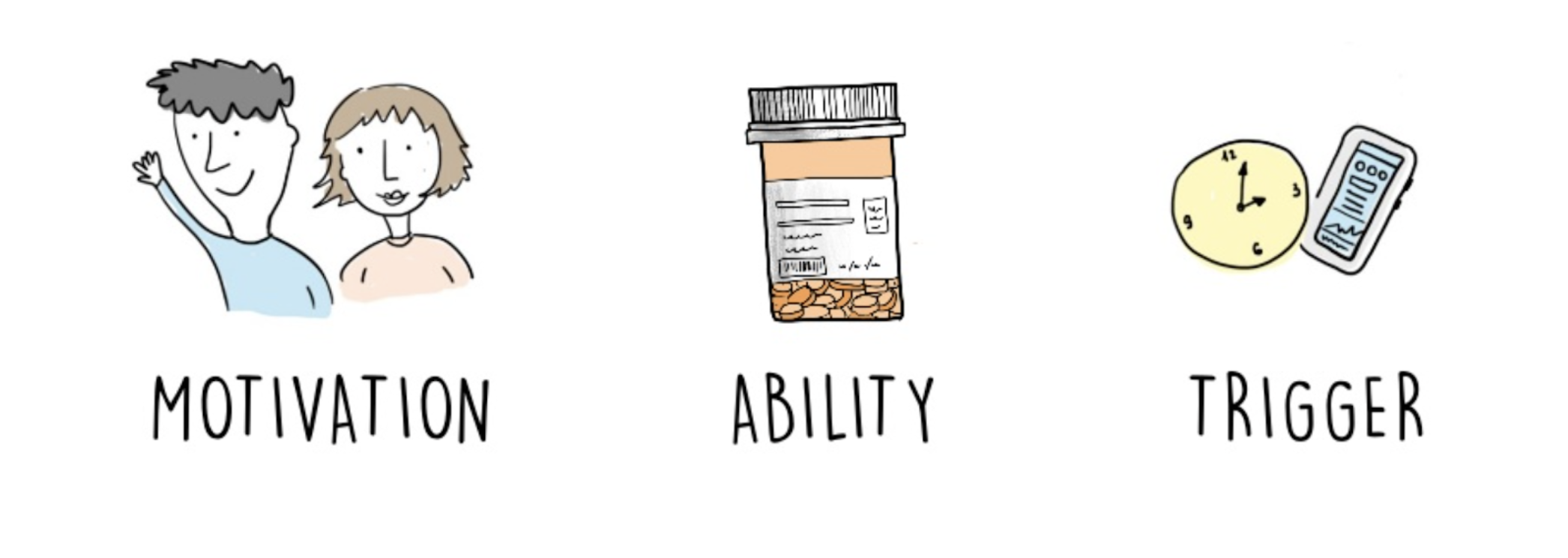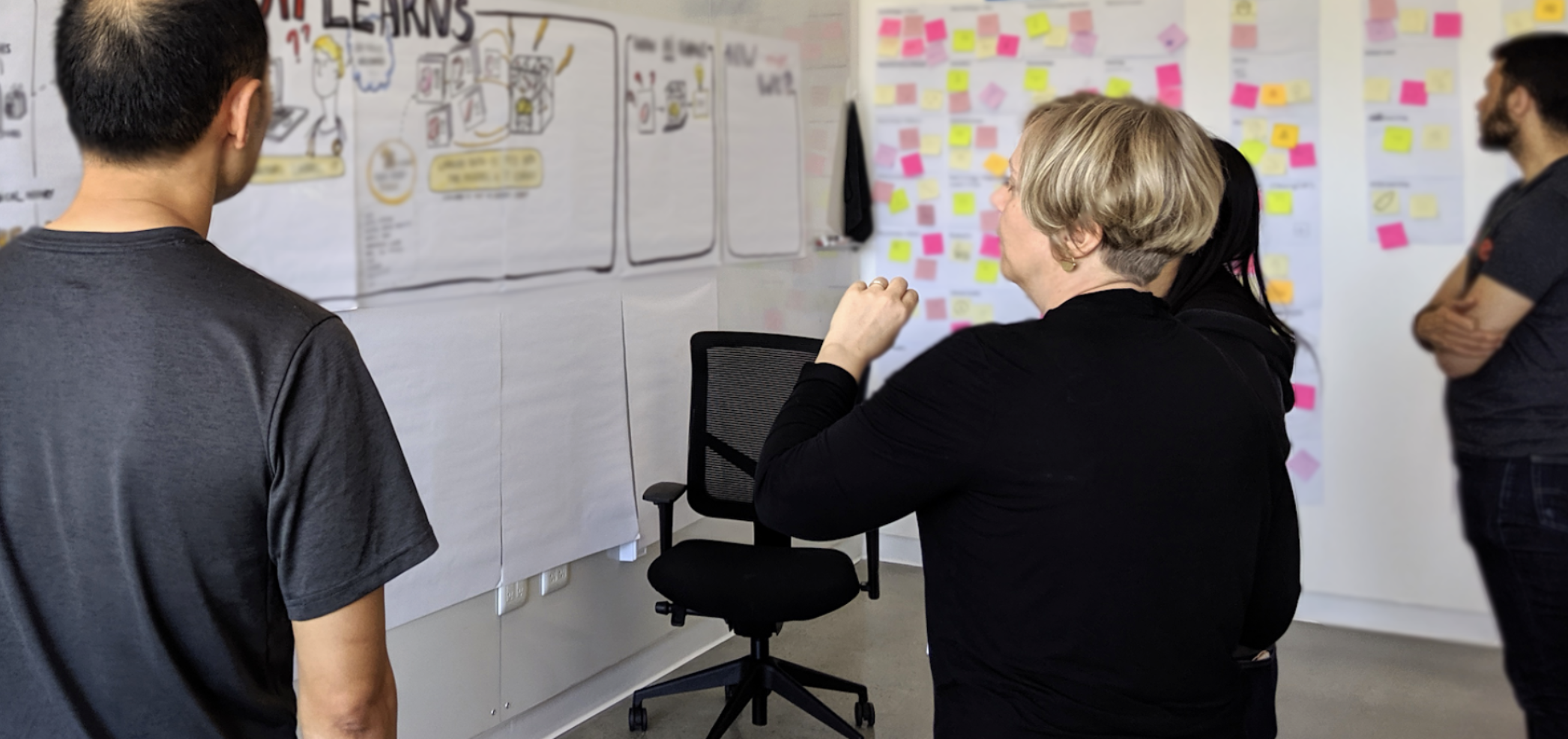Design x Anna Iurchenko
Product Designer at Google Health & Board Director at IxDA SF
Illustration by Casey Magnuson
Interview conducted by Tasnim Merlin on September 24, 2020.
Tell us about yourself.
I’m a designer and visual thinker. Right now I’m working at Google Health, creating products that apply artificial intelligence to help doctors better diagnose diseases, and generally help people live healthier lives. Before that, I was working with startups. Professionally, I’ve been in user experience (UX) design for about 10 years.
I started this journey back in the days when UX design wasn’t a specialization or profession. You would become a designer and do all kinds of things around digital products, including figuring out the product concept and information architecture, creating UI mockups, writing content, working on branding, creating illustrations, and often coding.
At some point, I was interested to see what goes beyond design, how digital products are launched, why some products become successful and some fail. So I stepped into product management and marketing and even spent a few months as a founder of a small startup. It was a journey of self-exploration and self-discovery before I decided that product design was what I really wanted to focus on. It’s my main passion right now. It encompasses everything that I love: problem solving, creativity, and creation.
It’s amazing that you’ve done event planning, management, mentorship, and marketing before entering the health field. Can you talk a little bit more about your journey?
My background is in engineering, and my major was in mechanical and electrical engineering, which is kind of far away from UX design. But it also led me to design. While studying engineering I got interested in human factors and application of psychological principles to the design of products and systems. I was curious about the nature of the interactions between people and technology.
When I was in university, specializations in design didn’t exist. Basically I grew in UX by teaching myself what it means to be a designer, what designers do, what skills I need to acquire, and how to actually design great products. It was a process of discovery out of curiosity and interest.
What prompted your interest in working in UX and healthcare? You were at Transplant Hero before going to Google Health.
Over the course of my career, I had a chance to work on products for different industries. I designed the shopping experience for smart fridges, as well as web and mobile apps for travel, e-commerce, social media. But once I started to work on Transplant Hero, I realized that healthcare was what I wanted to focus on for a longer time. It was amazing to know that what you create is actually changing people’s lives. This may sound cliche, but once you’ve had a chance to work on something meaningful, it’s really hard to do something else.
“This may sound cliche, but once you’ve had a chance to work on something meaningful it’s really hard to do something else.”
In the context of Transplant Hero, we were helping people who had transplant surgery to cope with the complex medication regimen. After organ transplantation, people must take immunosuppressive drugs for the rest of their lives to keep the immune system from attacking the transplanted organ. Missing even a single medication could be life threatening. So we were solving a complex problem that required designing a product that would change people’s health behavior and help them form new habits.
Once we released Transplant Hero, we started to get emails from our users with their health stories and how our product helped them to stick to their medication regimen. Parents would send us videos of their kids using the app, and we would watch a three-year-old child excitedly scream “Med time!” when the Transplant Hero alarm went off.
This project changed my attitude to design and the impact you can have as a designer. It made me think that I wanted to spend my time doing something that truly makes a difference for people. That’s how I started my journey with healthcare.
Can you tell us about your current role as a product designer at Google Health?
We are exploring the use of AI to assist doctors in diagnosing eye disease, identifying cardiovascular risk factors and signs of anemia from the eye, and improving breast cancer screening.
In one of my recent projects, I was designing a tool that uses AI to provide a real-time assessment of diabetic retinopathy, so the patient wouldn’t have to wait months for an ophthalmologist to review their retinal images.
Diabetic retinopathy is a complication of diabetes that can cause permanent blindness. Blindness can be prevented if disease is detected early, but it is often undetected because of limited access to eye care specialists. It is a huge problem for countries like India or Thailand, where there are only about 14 eye doctors for approximately 50,000 diabetics. This is about half the ratio in the United States. It’s fascinating to work in the space where technology improves the people’s health at scale.
At the core, my role is figuring out what product we need to create to solve a problem and how to make that product a standard part of patient care, then designing it and bringing it to life. All of this is a tight collaboration with product managers, scientists, clinicians, and researchers.
A big component of design work in healthcare is making sure the product is safe for patients and aligns with regulatory requirements, which are quite strict for anything that can influence health.
Can you tell us more about your experience working with a team of doctors, scientists, engineers, to create products for AI?
I work on products at the intersection of many disciplines, like public health, clinical practice, healthcare, and machine learning. To create a product that will have a positive impact on people’s health, it is not enough to be an expert in just one field. Specialists from every discipline need to bring their expertise to the table and work closely together from day one.
That is why a huge part of my work as a designer is deep-diving into various disciplines to learn things beyond UX and also facilitating collaboration in a multidisciplinary team. I need to create an environment that inspires ideas, allowing people to gain a shared understanding of users and their needs and co-design products together.
For example, we know that our deep-learning algorithm for detecting diabetic eye disease performs on par with ophthalmologists. This means that AI can be leveraged to improve patient care. But AI tools have never been used in eye screening before, so in order to build a product that will become an integral part of patient care and improve it, designers need to deeply understand clinical workflows, the needs and behavior and mental models of clinicians, and understand what user actions are crucial to providing accurate AI decisions. Then they need to understand how AI works and find ways to explain it clearly to a non-tech-savvy user.
For a goal like this, you need a team of clinicians, research scientists, machine learning engineers, ophthalmologists, and of course UX designers and UX researchers. This kind of multidisciplinary collaboration is like an orchestra, where everyone brings their unique experience, skills, and passion to create something truly beautiful and unique together.
I came across some of your presentations and doodles, and I was amazed at how you use them as visual aids. Can you tell us about that?
Sketching and visual storytelling are a huge part of my design process. I use sketches to explain my design decisions, visualize use cases and workflows, visualize ideas during brainstorming sessions, or just make collaboration more fun and inspiring.
Capturing information visually helps me learn, remember, and make sense of information, and I’ve found that it works great to bring others into my thinking process. It sparks energy in the room.
From time to time, I teach workshops on sketching for UXers and share my visual notes on my sketching blog. I also often sketch-note during lectures or at UX conferences and then share my notes on Medium.
Visual thinking and notetaking is a powerful tool that I believe should be taught in school. When we learn how to write using letters, we need to learn how to “write” using simple pictograms too. I believe that visual notetaking is a core skill that everyone should learn to master.
“Visual thinking and notetaking is a powerful tool that I believe should be taught in school.”
What tips do you have for new designers?
The nature of the design job requires us to be critical about everything we create. Self-criticism is a key function that forces us to grow and improve. But because design is quite subjective, meaning there is no right or wrong answer like in math, an inner critic that’s too active can take a toll on your self-esteem and eventually make you feel stuck—with a given project or in your career.
So my advice would be this: Early in your career, try to find an environment where you can get regular feedback on your work. This is not necessarily your co-workers. It could be an online or offline community or a mentor. Make the intentional effort to surround yourself with a few experienced designers, show them your work often, discuss your concerns or fears with them, get candid feedback on your design skills and areas of improvement, and get career advice.
“Early in your career, try to find an environment where you can get regular feedback on your work.”
What are you currently doing as a board director for the IxDA (Interaction Design Association)?
IxDA is a global design community with chapters in many cities across the globe. I’ve been co-leading the San Francisco chapter since 2019, and at the moment, we are a community of more than 10,000 design professionals.
Our goal is to build a community where designers can find mentors—people who can support them, inspire them, and expand their professional horizons. We host workshops, UX portfolio reviews, and a speaker series with fantastic designers like Bill Buxton, Indi Young, Scott Berkun, Amber Case, Christian Ervin, and many more. Overall, the focus is to help UXers to advance in their craft and progress in their careers.
What is your favorite thing to do in your free time?
Either sketching or reading. For the past few months, I’ve been reflecting on my emotions and events in my life through visual journaling. It helps me to relax and rebalance, which is especially helpful in this turbulent quarantine time. It is now a special 15 minutes of my day when I sit alone and create a simple visualization of my day.
I came up with a simple approach: I pick a color that represents my emotions at the moment, and a word that describes the key part of my day; then I sketch a simple object that relates to either one of them. Optionally I may describe more details or layer several days in one sketch. It works for me as a meditation—it brings more awareness into my day and gets me into a more relaxed state.










